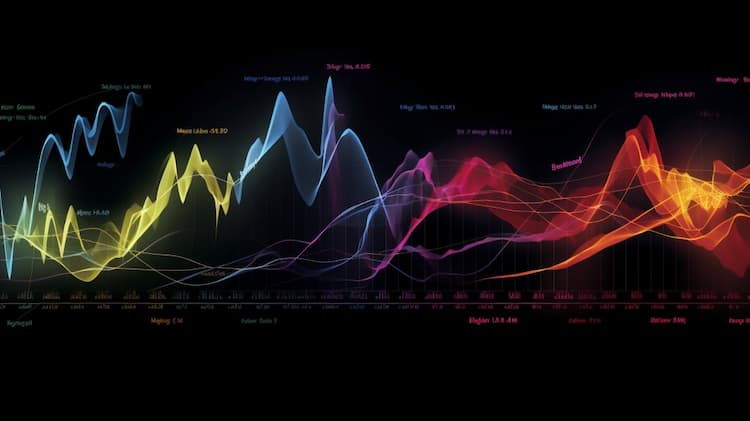GMF ISSUER
The issuer of the SPDR® S&P ® Emerging Asia Pacific ETF (GMF) is SSGA Funds Management, Inc. (SSGA FM), serving as the investment adviser to the fund. SSGA FM employs a sampling strategy in tracking the performance of the S&P Emerging Asia Pacific BMI Index, providing investors exposure to the emerging Asian Pacific markets. With a focus on mirroring the risk and return characteristics of the index, SSGA FM may invest in a subset of securities within the index or opt for a broader approach, aligning with the fund's objectives. The fund typically invests a significant portion of its assets in securities comprising the index and may utilize depositary receipts, cash equivalents, and money market instruments to achieve its investment goals. SSGA FM may also employ futures contracts to manage cash flows and correspond with index performance. It's noteworthy that the fund may concentrate its assets in specific industries or groups, in alignment with the index's composition. Additionally, the index is sponsored by S&P Dow Jones Indices LLC, providing transparency and determining index composition and weightings, though it's independent of both the fund and its adviser. Overall, SSGA FM's management approach aims to provide investors with diversified exposure to emerging Asian Pacific markets while closely tracking the S&P Emerging Asia Pacific BMI Index's performance.
GMF DIVIDEND
Dividends play a significant role in the investment strategy of the SPDR® S&P ® Emerging Asia Pacific ETF (GMF). As an exchange-traded fund (ETF) focused on tracking the performance of the S&P Emerging Asia Pacific BMI Index, GMF investors may receive dividends from the underlying securities held within the fund's portfolio. The index itself comprises a diverse range of publicly traded companies domiciled in emerging Asian Pacific markets, many of which have a history of paying dividends to shareholders. The dividend income generated by these companies contributes to the total return potential of GMF for investors. While the specific dividend yield may vary over time based on factors such as market conditions and individual company performance, dividends can provide investors with a source of passive income. Additionally, reinvesting dividends through dividend reinvestment plans (DRIPs) or utilizing the cash flow for other investment opportunities can further enhance the long-term growth potential of the investment in GMF. Overall, dividends represent a crucial component of the total return proposition for investors in GMF, adding to the appeal of this ETF for income-oriented investors seeking exposure to emerging Asian Pacific markets.
GMF TRACKING
The SPDR® S&P ® Emerging Asia Pacific ETF (GMF) employs a tracking strategy designed to closely mirror the performance of the S&P Emerging Asia Pacific BMI Index. Utilizing a sampling approach, the fund aims to replicate the risk and return characteristics of the index by investing in a subset of securities within it. SSGA Funds Management, Inc., the investment adviser to GMF, evaluates various factors including asset size and market conditions to determine the optimal portfolio composition. While the fund typically invests substantially all, but at least 80%, of its total assets in securities comprising the index, it may also invest in equity securities not included in the index, as well as cash equivalents and money market instruments. Additionally, the use of futures contracts enables the fund to manage cash flows and track index performance more efficiently. By closely aligning its investment strategy with the index methodology, GMF aims to provide investors with a reliable means of gaining exposure to the emerging Asian Pacific markets and potentially benefiting from their growth prospects over time.
GMF CORRELATION
The correlation of the SPDR® S&P ® Emerging Asia Pacific ETF (GMF) with its underlying index, the S&P Emerging Asia Pacific BMI Index, is expected to be very high. Since GMF aims to closely track the performance of the index, its price movements should generally mirror those of the index. However, it's important to note that while GMF strives for minimal tracking error, factors such as fees, expenses, and portfolio management decisions may cause slight deviations from the index's performance. Additionally, short-term fluctuations in market conditions or trading activity can also impact the correlation between GMF and its underlying index. Overall, investors typically expect a strong positive correlation between GMF and the S&P Emerging Asia Pacific BMI Index, indicating that changes in the index's value are likely to be reflected in GMF's performance.
GMF SECTOR
The SPDR® S&P ® Emerging Asia Pacific ETF (GMF) offers exposure to a diverse range of sectors within the emerging Asian Pacific markets. As of its last reporting, GMF's sector allocation was notably concentrated in industries such as finance and technology, reflecting the economic landscape of the region. With holdings spanning countries like China, India, Taiwan, and others, GMF provides investors with access to dynamic sectors driving growth and innovation across emerging Asia Pacific markets. The fund's sector composition may evolve over time in response to changes in market dynamics, regulatory environments, and economic trends within the region. Investors seeking exposure to the burgeoning economies of Asia Pacific through a diversified portfolio of sector-leading companies may find GMF to be a compelling investment option. However, it's important for investors to conduct thorough research and consider their investment objectives and risk tolerance before investing in GMF or any other ETF.
GMF EXPOSURE
The SPDR® S&P ® Emerging Asia Pacific ETF (GMF) offers investors broad exposure to the dynamic and rapidly growing emerging markets of the Asia Pacific region. With holdings across countries such as China, India, Taiwan, and others, GMF provides access to a diverse array of companies spanning various sectors, including finance, technology, consumer goods, and more. This exposure allows investors to participate in the economic growth and development of some of the world's fastest-growing economies. By investing in GMF, investors can gain exposure to companies driving innovation, benefiting from demographic trends, and capitalizing on expanding consumer markets in the Asia Pacific region. Whether seeking diversification, growth opportunities, or exposure to specific sectors within emerging Asian markets, GMF offers a convenient and efficient way for investors to access this dynamic investment landscape. However, as with any investment, it's essential for investors to carefully consider their investment objectives, risk tolerance, and time horizon before allocating capital to GMF or any other ETF.



